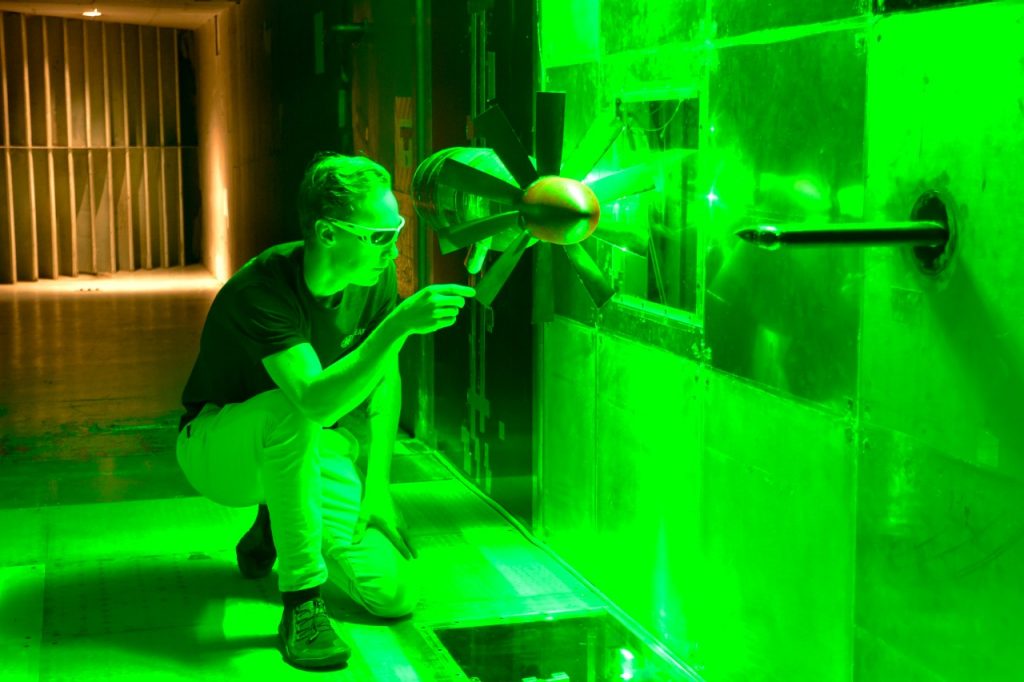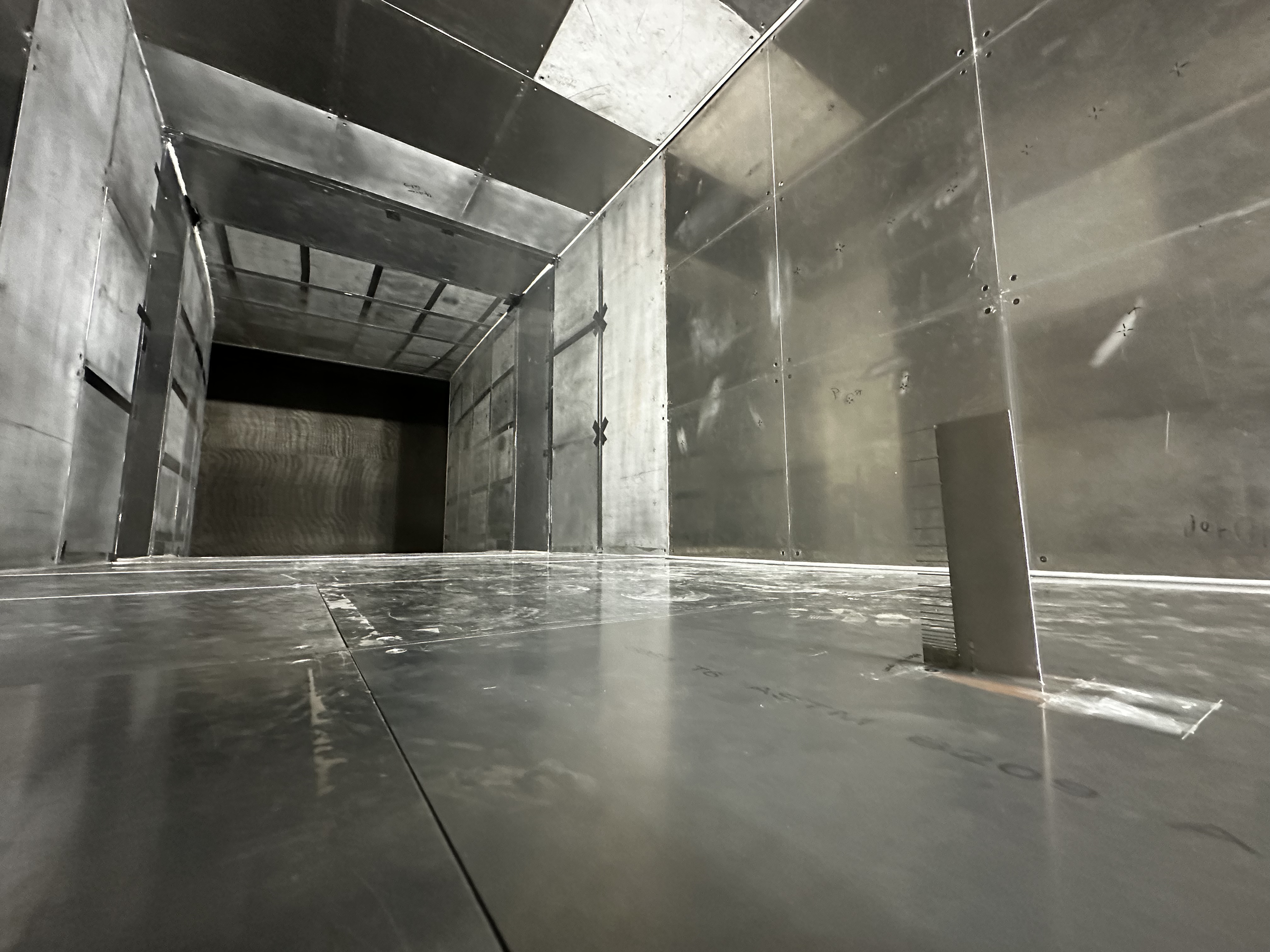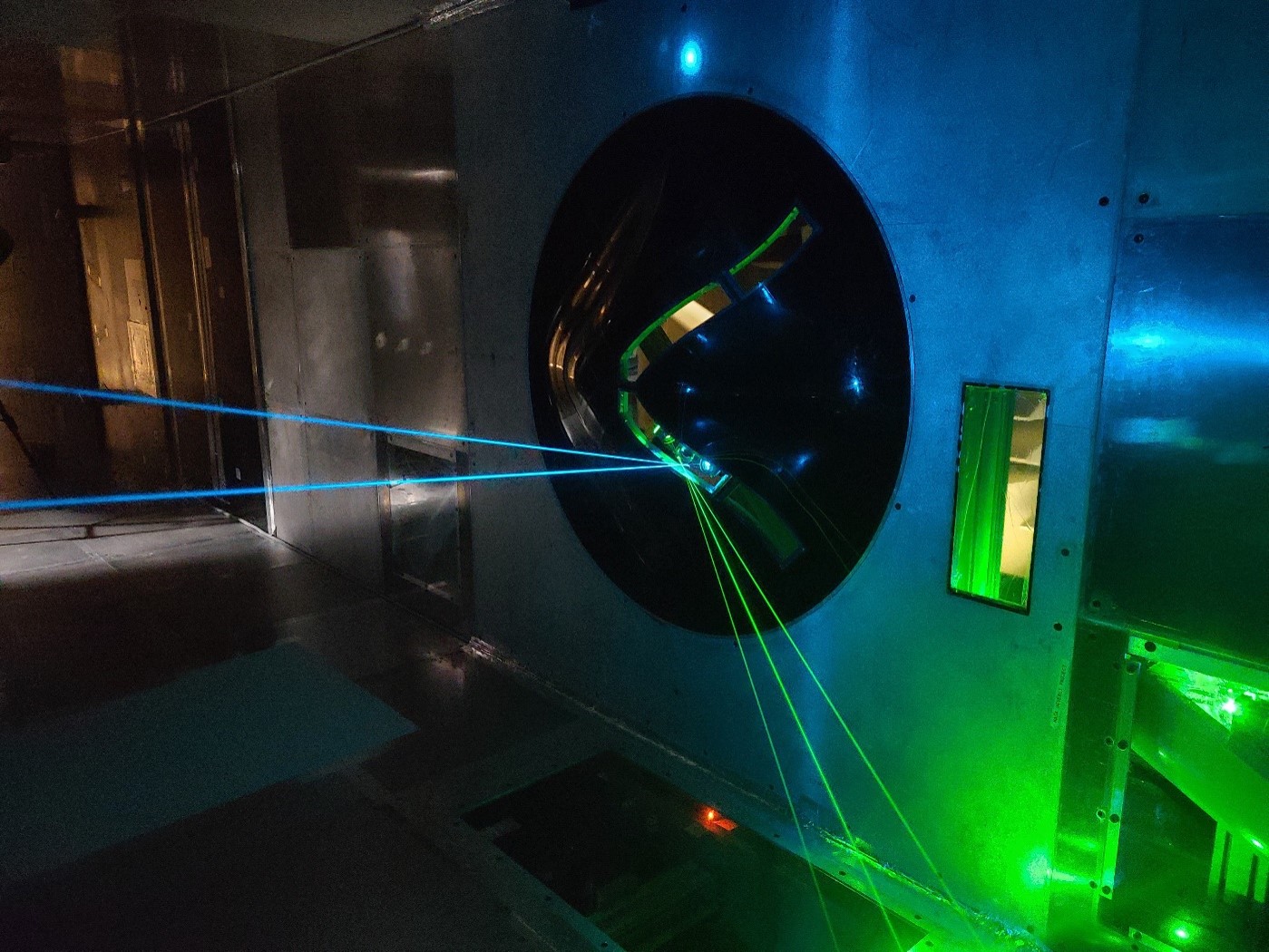Aerodynamics
Stability Wind Tunnel Aerodynamic Qualities
The flow uniformity in the tunnel is very good. With a maximum speed of 80m/s (without blockage) corresponding to a Reynolds number per meter of 5,000,000 it is one of the largest university owned facilities in the United States. There a a small favorable streamwise pressure gradient in the test-section on the order of 0.3% per meter (normalized on the freestream dynamic pressure). Such capacity allows for full scale testing of various flows (e.g. wind turbine blades, UAV's etc...)
Turbulence levels in the Stability Wind Tunnel are extremely low, on the order of 0.05% or less. Although not originally designed as a low turbulence facility, the addition by the NACA of seven anti-turbulence screens, coupled with the other flow smoothing features of the tunnel, resulted in very low turbulence levels. Hot-wire anemometry measurements made in the test section revealed that the flow there was closely uniform and that the freestream turbulence levels varied between 0.01 and 0.04% (for velocities between 5 and 75m/s) as seen in the Table 1 below.
| Freestream Velocity | RMS Streamwise Fluctuations |
| V [m/s] | u'/V |
| 12 | 0.016% |
| 21 | 0.021% |
| 30 | 0.024% |
| 48 | 0.029% |
| 57 | 0.031% |
Table 1. Turbulence Levels.
Further details of the turbulence characteristics of the facility are given by Choi, K., and Simpson, R.L., 1987, "Some Mean Velocity, Turbulence and Unsteadiness Characteristics of the VPI & SU Stability Wind Tunnel" (PDF | 15MB) Department of Aerospace and Ocean Engineering, Virginia Polytechnic Institute and State University, Blacksburg, Virginia 24061, Report VPI-Aero-161.
Aerodynamic Test-Section Image Gallery (Click any of the images below to expand):





